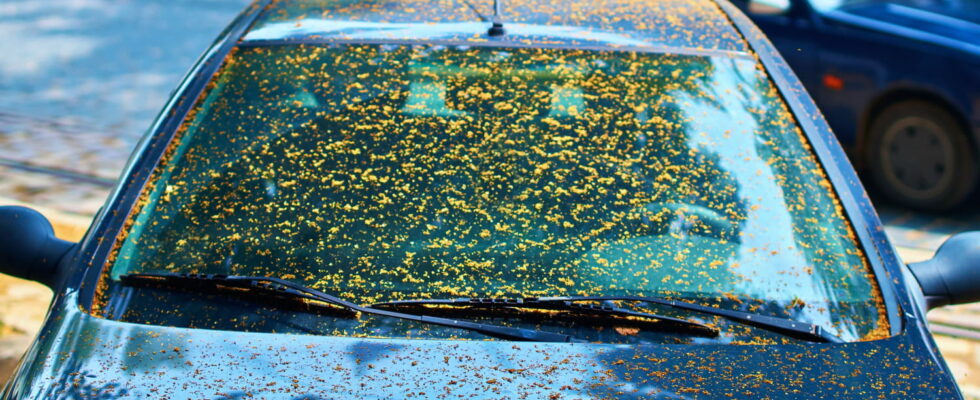This trick with this inexpensive product allows you to clean the most stubborn stains on cars.
All drivers know how difficult it is to keep a car clean. Pollution, rain, mud, dust, insects… there are many causes of dirt. Fortunately, some stains can be removed quite easily provided you take the trouble to clean them. Most often, soap and water are enough. For the less courageous or those who do not have the time, the rollers in the car wash do the job but you have to spend around ten euros. However, some dirt is much more difficult to remove and requires quite specific products.
If you have ever parked your car under trees at a certain time of year, you may well understand what “difficult to remove” means. Towards the end of spring, the sap from the trees flows in abundance and deposits on everything underneath. This is the case, for example, of lime trees which pour a lot of sap onto the sidewalks during the month of June. The asphalt under the branches then becomes very sticky to the point that it becomes almost impossible to walk on it. So imagine if you have the misfortune of parking your vehicle (even for a few minutes) under these trees…

The sap then forms a sticky film that will settle on the bodywork, windows, plastics, tires, etc. And there, water and soap will not be enough. Nor will black soap or baking soda, often popular for removing certain stains. The miracle solution is to buy industrial alcohol, at 95°, and use a soft cloth. You then have to gently rub the sap stains which will disappear thanks to the dissolving properties of the alcohol. The operation is tedious but it works: the sap disappears without damaging the paint. The icing on the cake is that cleaning is not very expensive, industrial alcohol can be found in all DIY stores for a price between 5 and 10 euros per liter.
To make it easier to clean sap from a car, however, it is essential to act quickly. Because the longer it remains on the surface, the harder it will become and the more difficult it will be to remove. To make matters worse, sap contains natural chemicals that can react with the paint on the bodywork. Over time, it can damage the protective varnish layer, or even the paint itself, causing stains and discoloration. In addition, after cleaning the sap, it may be useful to apply a protective wax to the bodywork to help prevent future damage. And generally speaking, to protect your vehicle as much as possible from external attacks, it is recommended to park in covered areas as much as possible.
